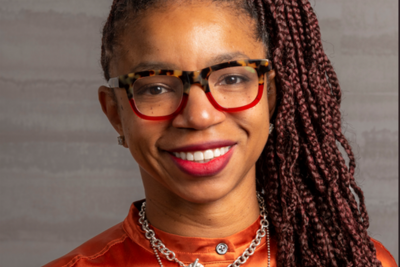April is Child Abuse Prevention Month and, as an organization dedicated to supporting young girls in under-resourced communities, we felt it necessary to highlight the importance of coming together as a community to be partners in abuse advocacy and prevention. Child abuse is never an easy subject to talk about, but the following points will help you know what to look out for and give you better insight as to how you can be an integral part of the prevention community.
Types of Abuse: Emotional abuse, child neglect, physical and sexual abuse
Emotional abuse: This type of abuse damages a child's sense of self-worth and negatively impacts their emotional development. Perpetrators commonly use belittling language, yell, threaten and even go as far as intentionally subjecting the child to intentional humiliation. They may also outright ignore their child. Plenty of parents don't see these actions as a form of abuse, and so it's important to recognize behaviors a child may be projecting at the hand of their mental turmoil. Children who are suffering from emotional abuse may also demonstrate the following behaviors:
- Delayed emotional development
- Depression and/or anxiety
- Desperately seeks affection from other adults
- Low self-esteem
- Declining performance at school
- Developmental regression, like bedwetting
Child neglect: In 2018, it's nationally estimated that 1,770 children died from neglect or abuse. Neglect, specifically, is defined by the failure to provide adequate food, shelter, affection, supervision, education, or dental and medical care. Again, behaviors like this can cause long-term psychological problems, so knowing what to look out for is important:
- Poor hygiene
- Excessive weight gain
- Malnourishment, excessive weight loss
- Habits of stealing money or food
- Poor record of school attendance
- Lack of clothing or supplies to meet physical needs
Physical abuse: Deliberate harm directed at the child by way of hitting or other physical punishment. It's a red flag if parental discipline is causing bruising, broken skin, swelling, or leading to situations that require medical attention. Children will exhibit the following behaviors if they're being physically abused:
- Shying away from touches or flinching at sudden movements
- Unexplainable illnesses and physical injuries
- Long clothing in hot weather (could be covering up bruises, burn marks, etc.)
- Excessive tardiness or outright absence from school
Sexual abuse: Of all sexual assault victims, 2 out of 3 are ages 12-17 and 1 in 9 girls under the age of 18 have experienced sexual abuse at the hands of an adult. Sexual abuse includes the following acts:
- Subjecting children to pornographic photography or videos
- Touching of private parts
- Attempted or completed rape
According to one source, approximately 60% of children who are sexually abused are abused by someone the family knows well and trusts. This is also known as institutional abuse, where individuals who use their positions of power in the community to prey on children. A specific instance of this is seen in the thousands of sexual assault cases perpetrated by priests and clergy members. These cases have led to thousands of victims filing clergy abuse lawsuits against the Church. Signs a child has been sexually abused or assaulted are as follows:
- Has trouble walking or sitting
- Unwilling to change in front of others
- Fear or avoidance of a certain individual
- Use of inappropriate language regarding their private parts
- Mentions "secrets" with an individual
Child abuse victims may often be manipulated into feeling ashamed or guilty for the abuse they experienced at the hands of a parent or superior. In instances of sexual abuse, this is known as grooming. This strategy is used by perpetrators of sexual abuse who know their position of power will intimidate and silence their victim. In most cases the individual will be overly nice and sensitive, as to create a sense of trust with the child. Grooming techniques can look like:
- Isolating introverted children
- Excessive gift buying
- Secret communication via private online messages
- Threats of embarrassment - "no one will believe you"
What you can do in your home & your community
The sad reality is that many victims don't speak out about the abuse or assault they experienced, especially children. The sense of guilt, shame, and confusion may prevent them from feeling like they can speak up. When this happens, the likelihood of depression and substance abuse later in life becomes much more likely. Here's what you can do to be a better advocate and help prevent abuse in your community:
- Listen — let your child, and/or your child's friends know they can come to you if they have a concern about the way an adult is treating them.
- Start the conversation with your children early about appropriate and inappropriate touching.
- Teach them the proper words for their private parts.
- Watch out for the warning signs of child abuse.
- Contact your school's guidance counselor, or another school supervisor if you have any concerns about someone else's child.
- If your child or someone else's child does come to you, avoid denial and reassure the child they did nothing wrong.
Conclusion:
We hope that the above information has been helpful in educating you on the ways we can all be abuse prevention partners to ensure our children lead healthy and happy lives. To learn more about the initiatives of this year's Child Abuse Prevention Month, visit ChildWelfare.gov.




